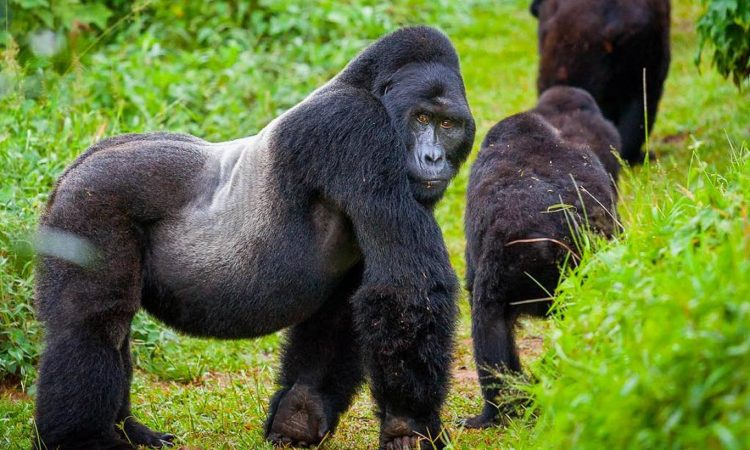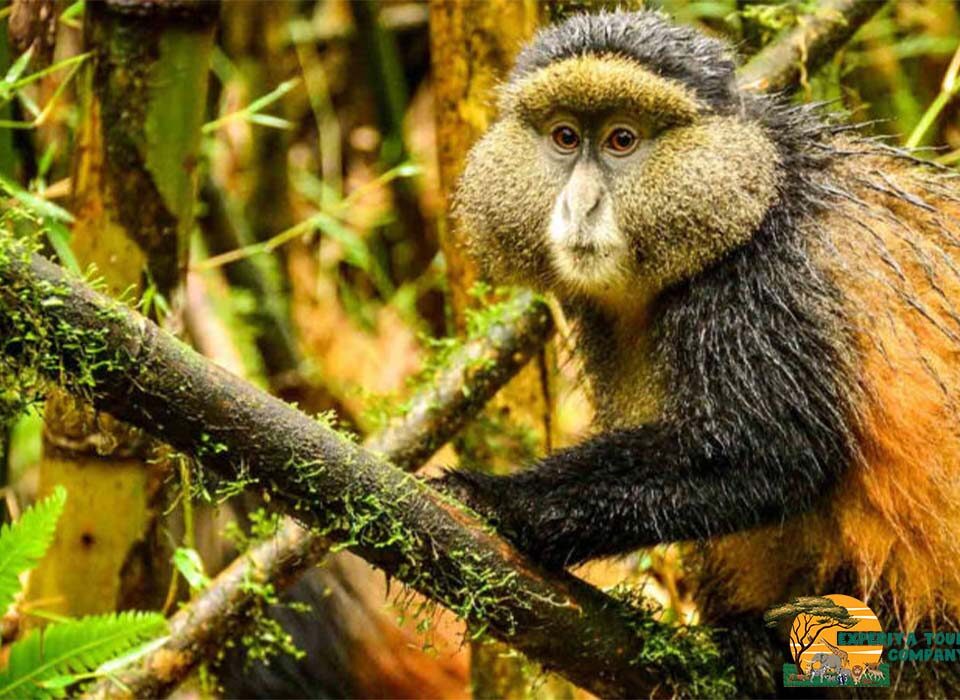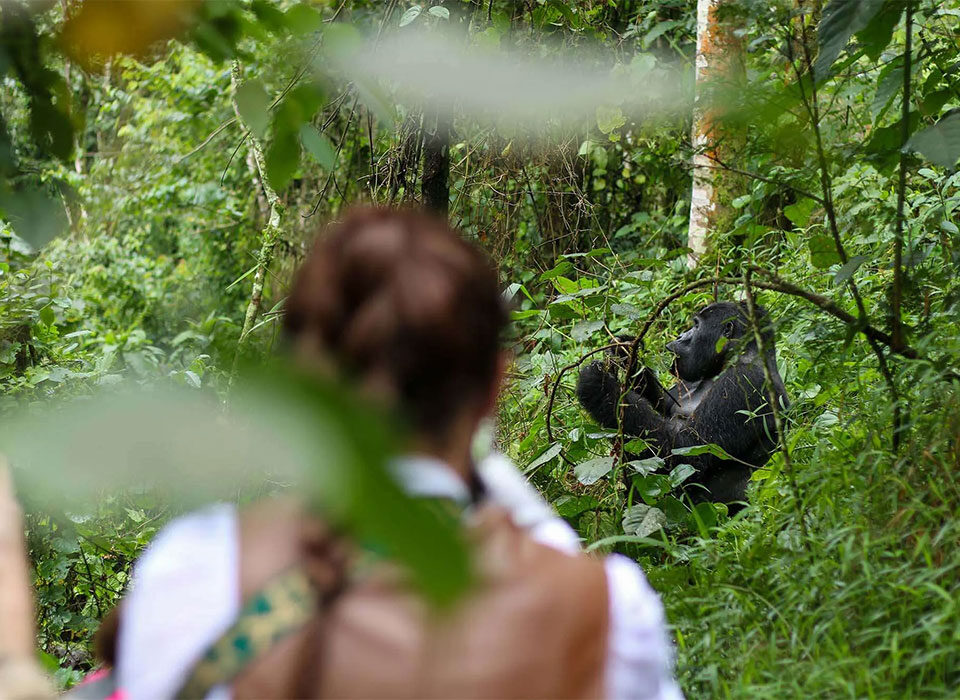
Can I Trek Gorillas from Kigali to Bwindi? | Uganda Gorilla Trekking from Rwanda with Experiya Tour Company
October 22, 2025
How Long Does a Gorilla Trek Take in Uganda? | Uganda Gorilla Trekking Duration Explained by Experiya Tour Company
October 22, 2025Is It Better to Trek Gorillas in Uganda or Rwanda? | Gorilla Trekking Comparison by Experiya Tour Company

Is It Better to Trek Gorillas in Uganda or Rwanda?
Gorilla trekking is one of the most profound wildlife experiences on Earth — a rare opportunity to come face to face with the gentle giants of the forest. These magnificent mountain gorillas, found only in the misty jungles of Uganda, Rwanda, and the Democratic Republic of Congo, captivate travelers with their intelligence, grace, and raw power. Yet one question dominates every traveler’s planning process: Is it better to trek gorillas in Uganda or Rwanda?
Both countries offer incredible encounters and are deeply committed to gorilla conservation, but they differ in cost, terrain, accessibility, and overall experience. Choosing between the two isn’t about which country is better — it’s about which one best suits your travel style, budget, and expectations. In this guide, we’ll compare Uganda’s Bwindi Impenetrable National Park and Rwanda’s Volcanoes National Park, covering everything you need to know to make the right choice for your dream gorilla trek.
1. The Gorilla Parks: Uganda vs. Rwanda
Uganda and Rwanda are home to two of the world’s most important mountain gorilla populations, but their environments and trekking experiences are quite different.
Uganda: Bwindi Impenetrable National Park & Mgahinga Gorilla National Park
Uganda’s gorilla trekking takes place mainly in Bwindi Impenetrable National Park, a UNESCO World Heritage Site covering 331 square kilometers of dense, ancient rainforest in the country’s southwest. Bwindi is home to more than half of the world’s remaining mountain gorillas and has over 22 habituated gorilla families available for trekking. The nearby Mgahinga Gorilla National Park, part of the Virunga Volcanoes region, is smaller but equally stunning and home to the Nyakagezi family.
Rwanda: Volcanoes National Park
Rwanda’s gorilla trekking takes place in Volcanoes National Park, part of the Virunga massif shared with Uganda and Congo. The park covers about 160 square kilometers and is famous for its lush bamboo forests, volcanic peaks, and historical connection to Dian Fossey, the primatologist whose work with gorillas inspired global conservation efforts. Rwanda has 12 habituated gorilla families, making it slightly smaller in population compared to Bwindi but exceptionally well-managed and easy to access.
2. Gorilla Trekking Experience
Both Uganda and Rwanda guarantee gorilla sightings — the Uganda Wildlife Authority (UWA) and Rwanda Development Board (RDB) maintain excellent protection and tracking systems. However, the trekking experience itself varies in terrain, vegetation, and atmosphere.
Uganda’s Trekking Experience:
Bwindi’s terrain is rugged and wild. The name “Impenetrable” isn’t an exaggeration — the forest is dense, humid, and full of steep slopes and tangled vines. Treks can last anywhere from 30 minutes to 6 hours, depending on the gorilla family’s location. The forest feels ancient and mysterious, giving trekkers a true sense of adventure. The experience is intimate, raw, and deeply immersive.
Each of Bwindi’s four sectors — Buhoma, Ruhija, Rushaga, and Nkuringo — offers different landscapes, altitudes, and gorilla groups. The Rushaga sector also hosts the Gorilla Habituation Experience, allowing visitors to spend up to four hours with semi-habituated gorillas alongside researchers — something you can’t experience in Rwanda.
Rwanda’s Trekking Experience:
Volcanoes National Park offers a smoother and often shorter trekking experience. The forest is dominated by open bamboo vegetation and gentle terrain, making the hikes less physically demanding. Most treks take 2 to 4 hours, and sightings are highly reliable.
Rwanda’s gorilla trekking feels more structured and luxurious — with professional organization, paved access roads, and high-end lodges near the park entrance. It’s perfect for travelers seeking a comfortable, premium experience without long, challenging hikes.
If you’re after a rugged, adventurous journey, Uganda stands out. If you prefer comfort, accessibility, and efficiency, Rwanda delivers beautifully.
3. Gorilla Trekking Permit Costs
One of the biggest differences between Uganda and Rwanda is the cost of the gorilla trekking permit — and it’s often the deciding factor for many travelers.
- Uganda Gorilla Permit: USD 800 per person per trek (as of 2025)
- Rwanda Gorilla Permit: USD 1,500 per person per trek
Uganda’s lower permit price makes it far more affordable, especially for families, small groups, or travelers combining gorilla trekking with other safaris. The money from both countries supports conservation and community development, but Uganda’s pricing allows more people to experience the adventure.
If you want an even more in-depth encounter, Uganda also offers the Gorilla Habituation Experience at USD 1,500 per person, giving you four full hours with a gorilla group — twice as much time as a standard trek and still the same price as Rwanda’s regular permit.
4. Accessibility and Travel Logistics
When choosing between Uganda and Rwanda, accessibility often plays a major role — particularly how long it takes to reach the gorilla parks.
Rwanda’s Accessibility:
Rwanda is the easier option in terms of travel time. Volcanoes National Park is located just 2.5 to 3 hours’ drive from Kigali International Airport, making it possible to arrive in Rwanda in the morning and trek gorillas the next day. For travelers with limited time or who prefer shorter drives, Rwanda is unbeatable.
Uganda’s Accessibility:
Bwindi Impenetrable National Park lies about 8 to 10 hours’ drive from Entebbe or Kampala. However, there’s a fantastic alternative — flying into Kigali, Rwanda, and driving to Bwindi via the Cyanika or Katuna border posts. This route takes just 4 to 5 hours, making it as convenient as trekking in Rwanda but at a lower cost. Many visitors now fly into Kigali and trek gorillas in Uganda for this reason.
So, if you want pure convenience, Rwanda wins. But if you don’t mind a longer (or scenic) journey, Uganda rewards you with greater diversity and value.

5. Landscape and Scenery
The two parks offer dramatically different backdrops for your gorilla encounter.
Bwindi:
Bwindi is a true rainforest — thick, dark, and humid. Its landscape features steep ridges, deep valleys, and dense vegetation that makes every trek feel like a true jungle expedition. The mist clings to the trees, creating a mystical atmosphere that photographers and nature lovers adore.
Volcanoes National Park:
Volcanoes National Park lies among the Virunga Mountains, offering sweeping views of volcanic peaks and open bamboo zones. It’s less dense than Bwindi, making photography easier and hiking more straightforward. The mountain views add a cinematic touch to the experience.
If you’re drawn to raw wilderness and dense jungle, Uganda is the choice. If you prefer wide vistas and iconic volcano scenery, Rwanda will steal your heart.
6. Accommodation and Comfort Level
Both countries offer excellent accommodation options, but the atmosphere differs.
Uganda:
Bwindi offers a wide range of lodges — from luxury retreats like Clouds Mountain Gorilla Lodge and Bwindi Lodge to mid-range and budget-friendly options. Every sector has comfortable places to stay, and many lodges are perched on ridges with breathtaking forest views.
Rwanda:
Rwanda’s accommodation scene is more high-end. Near Volcanoes National Park, you’ll find world-class lodges such as Bisate Lodge, Sabyinyo Silverback Lodge, and One&Only Gorilla’s Nest. These properties offer unmatched luxury and service but come with a higher price tag.
If you want affordability and variety, Uganda is ideal. If you’re after luxury and exclusivity, Rwanda excels.
7. Wildlife and Additional Activities
While the gorillas are the main attraction, both countries offer incredible add-on experiences.
In Uganda:
You can combine gorilla trekking with other adventures. Visit Queen Elizabeth National Park for classic savanna safaris, spot chimpanzees in Kibale Forest, or relax at Lake Bunyonyi after your trek. Uganda’s diversity makes it easy to design a multi-experience safari.
In Rwanda:
Rwanda’s compact size makes travel quick. You can combine gorilla trekking with chimpanzee tracking in Nyungwe Forest National Park, a game drive in Akagera National Park, or relaxation by Lake Kivu. The country’s infrastructure makes travel smooth and efficient.
If you’re looking for a diverse wildlife itinerary, Uganda wins. If you want a seamless, polished travel experience with minimal movement, Rwanda is ideal.
8. Trekking Difficulty and Physical Fitness
Both treks require moderate fitness, but there are differences.
Bwindi’s terrain is more challenging due to its steep, muddy, and thick trails. Treks can last several hours and may involve climbing hills or descending valleys. Rangers assign groups based on fitness levels, so older or less fit trekkers can still have a manageable experience.
Rwanda’s trails are shorter and gentler, thanks to its bamboo forests and open terrain. It’s a better choice for travelers who prefer shorter hikes or have physical limitations.
If you want a test of endurance and a feeling of raw adventure, choose Uganda. If you want an easier, smoother hike, choose Rwanda.
9. Cultural Experience
In Uganda, the Batwa people, who once lived in the forest, offer rich cultural experiences. You can visit their communities, learn about their traditions, and see how tourism supports their livelihoods. Rwanda also offers cultural visits, such as the Iby’Iwacu Cultural Village, but Uganda’s community experiences feel more grassroots and authentic.
10. Overall Value for Money
When comparing cost, diversity, and depth of experience, Uganda offers better value for money. You’ll spend less on permits, accommodation, and transportation, while still enjoying world-class gorilla encounters. Rwanda offers luxury, comfort, and accessibility — ideal for high-end travelers who want a shorter, more polished trip.
In simple terms:
- Choose Uganda if you want affordability, adventure, and a rich variety of experiences.
- Choose Rwanda if you want luxury, comfort, and convenience.
Either way, you’ll have one of the most emotional wildlife encounters imaginable — standing just meters away from a mountain gorilla family in the heart of Africa’s misty mountains.
Plan Your Gorilla Trek with Experiya Tour Company
Whether you choose Uganda or Rwanda, the key to a successful gorilla trekking experience is working with an expert, reliable safari operator — and Experiya Tour Company is one of the best in East Africa.
Experiya Tour Company specializes in gorilla trekking safaris, wildlife expeditions, and customized tours across Uganda and Rwanda. Their experienced team handles all logistics, from securing gorilla permits and organizing transport to booking lodges and guiding you through the trek. They’ll help you decide which destination suits your budget, time, and preferences — whether it’s the misty trails of Bwindi or the volcano slopes of Rwanda.
With Experiya, every journey is personal, well-planned, and filled with authentic experiences that go beyond the ordinary. Their passionate guides ensure your trek is not only safe but deeply memorable.
So, is it better to trek gorillas in Uganda or Rwanda? The answer depends on you — but whichever country you choose, Experiya Tour Company will make it an extraordinary adventure you’ll cherish forever.



